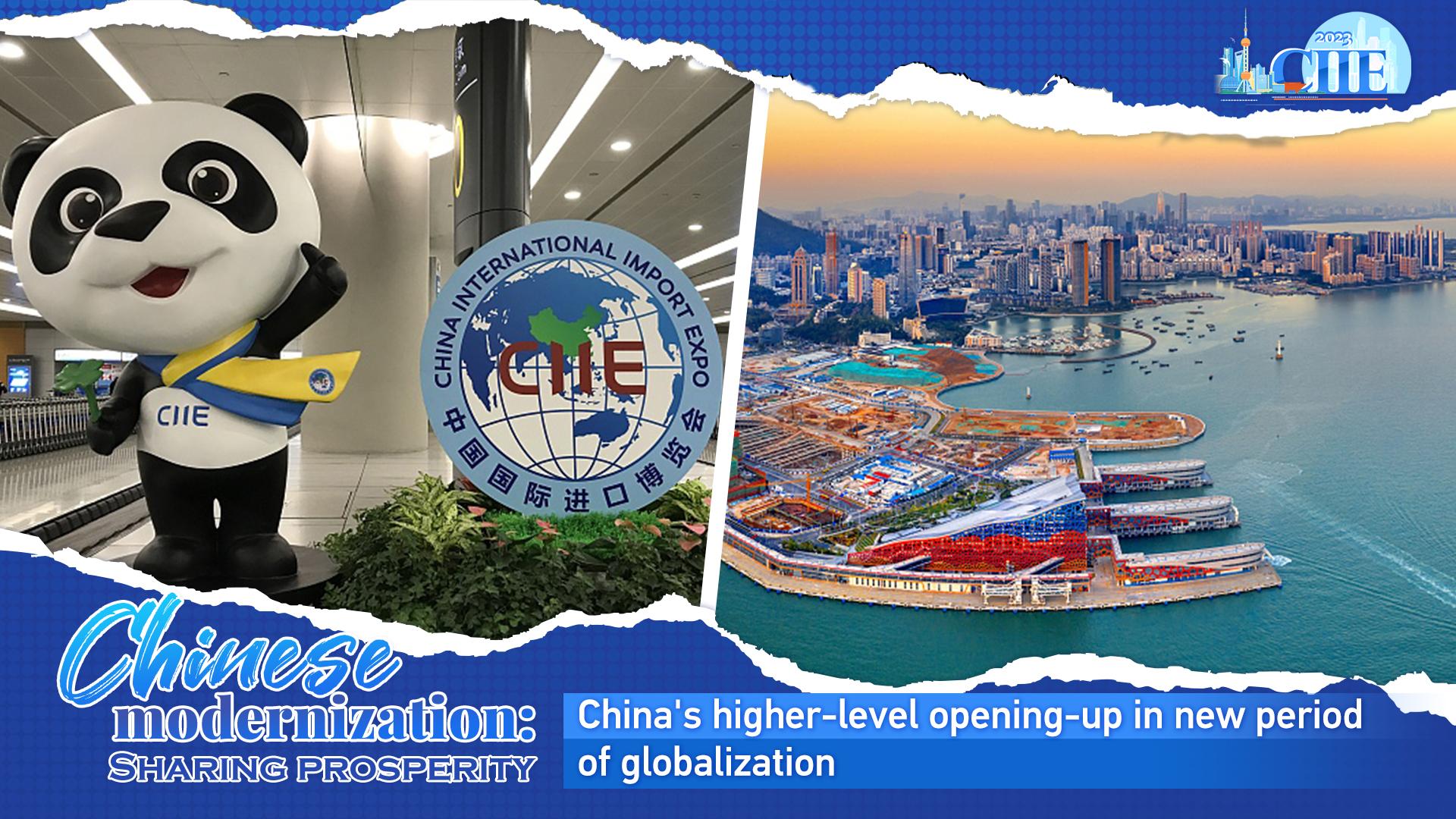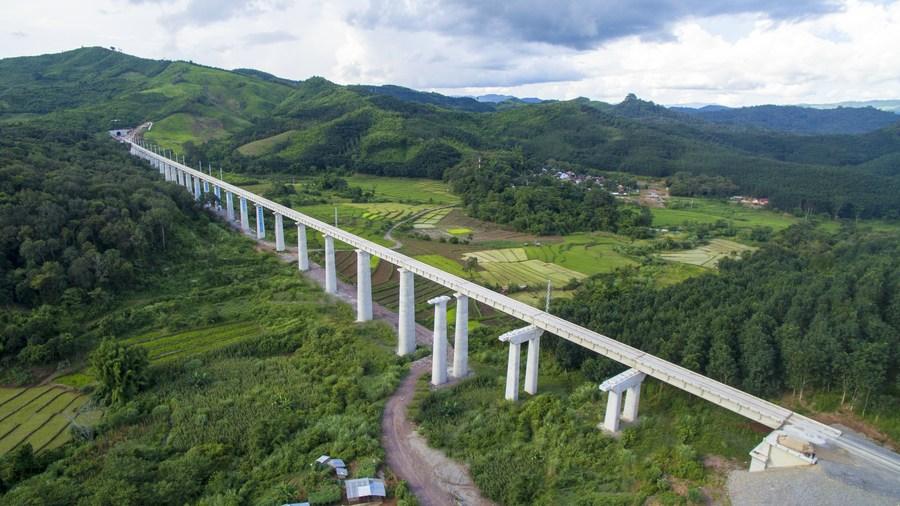
Editor's note: The sixth China International Import Expo (CIIE) is being held in Shanghai from November 5 to 10. China, taking CIIE as a link, joins hands with countries worldwide to create opportunities. How can China continue its high-level opening-up amid challenges to globalization such as protectionism? To explain the concept of China's development, CGTN and China Institute for Innovation and Development Strategy (CIIDS) have launched the "Chinese modernization: Sharing prosperity" series.
By Manoj Joshi
China opened up to the world by introducing the private sector and market inducements to the state-dominated system. Before 1978, China had virtually no private businesses; but today, private firms contribute to some 60 percent of China's GDP.
In the process, China has undergone a double-digit economic growth for almost two decades, which has helped to remove 800 million people out of poverty. In the process of opening-up, China had to completely overhaul its economic system, but this was done through careful experimentation. As Deng Xiaoping once put it, this is "crossing the river by feeling the stones."
But though the market played an ever greater role in allocating resources, the state still maintains strong control over the economy today. On one hand, there has been significant opening-up of FDI in the Chinese economy and the opening of new sectors to foreign investment. On the other, the state continues to provide subsidies to strategic industries.
A lot of the Chinese perspective is contained in its most recent 14th Five-Year Plan. From the outset of reform and opening-up, China has prioritized development of domestic industry and capabilities. China has become an innovative country, making major advances in areas like space, deep-sea engineering, supercomputing and quantum information. It has the world's largest high-speed train network. And extreme poverty has been eliminated in the country. In the 13th Five-Year Plan, China had opened up to the world through the Belt and Road Initiative.

Aerial view of the China-Laos railway over the villages and fields in northern Laos, July 29, 2020. [Photo/Xinhua]
Currently, China has to deal with the new period of globalization, which involves greater protectionism. The COVID-19 pandemic has brought an era where countries are seeking to create supply chain resilience by nearshoring and friendshoring. The WTO has not been very effective in coping with the situation.
And countries have sought multilateral and plurilateral options to deal with the issue. Groupings like RCEP, CPTPP and the Digital Economic Partnership Agreement have emerged.
In addition to all these are geopolitical developments, such as the continuing U.S.-China trade war, which has now deepened with the U.S. imposing significant restrictions on the export of semiconductors to China. Another challenge to globalization has come from the comprehensive sanctions imposed by the U.S. and Europe on Russia. But to go by the current trends, decoupling will not just be limited to semiconductors. We are likely to see more new lists involving critical supply chains relating to food, antibiotics, and other key pharmaceuticals, energy and so on.
In these circumstances, the 14th Five-Year Plan speaks for the need to China to continue deepening supply-side reform, foster new demand through innovation-driven development, and ensure high-quality supply and make the supply system adaptable to domestic demand. The dual circulation strategy calls for boosting domestic demand, and creating an effective domestic demand system and a vibrant domestic market, which will through the international circulation, enhance the economy as a whole.
At the heart of the current plans are the importance of innovation and development of science and technology, and leveraging China's existing market for further growth. This involves strengthening basic research, and building major platforms for science and technology innovation. The focus will be on making Beijing, Shanghai and the Greater Bay Area as international centers of science and technology innovation. Hainan, for example, will finish all the necessary infrastructure for independent custom operations by 2023. And Hainan will realize independent custom operations throughout the whole island by 2025. By 2025, it will become the world's largest free trade port, a center for offshore financing, duty-free shopping and a competitor to Hong Kong and Singapore. This is part of a largest scheme to boost domestic consumption, which is a key element to China's new dual circulation economic strategy.
Manoj Joshi, a distinguished fellow at the Observer Research Foundation in New Delhi, India, shared his thoughts on this topic.

 中文
中文



